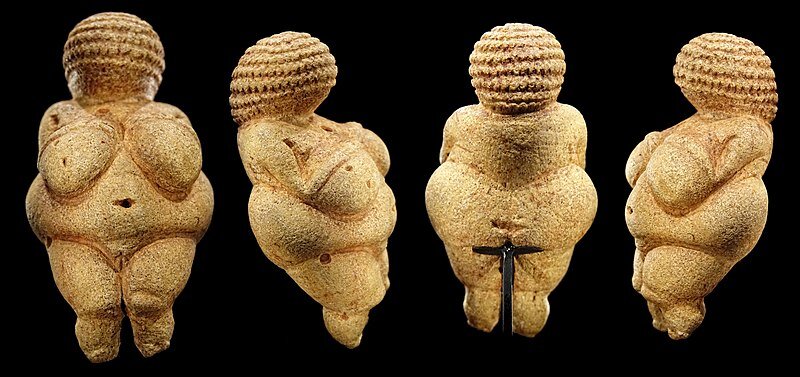שבת סה, ב
הַקִּיטֵּעַ יוֹצֵא בְּקַב שֶׁלּוֹ, דִּבְרֵי רַבִּי מֵאִיר
MISHNA: One with an amputated leg may go out on Shabbat with his wooden leg, as it has the legal status of a shoe; this is the statement of Rabbi Meir.
The more you look, the more that amputees and amputation appear in Jewish sources. Here are just a few:
“And you shall cut off her hand” (Deut. 25:12) is the Biblical punishment for a woman who, when trying to save her husband, mutilates the genitals of his attacker.
Men from the tribes of Reuven and Shimon cut off the thumbs and big toes of a Canaanite king they defeated in battle (Judges 1:6)
King David ordered the amputation of the hands and feet of the men who had killed Ish-Boshet (II Samuel 4:12).
The Midrash (Midrash Tehilim 137:4) relates that after the destruction of the First Temple the Jews exiled to Babylon cut off their own thumbs so that they would not be able to play their musical instruments in front of Nebuchadnezzer.
The hands of Yissachar from the village of Barkai were amputated as punishment for his contempt of the government (Pesachim 57b).
It is little wonder then, that the Talmud mentions prostheses, which, it turns out, have been around for as long as we have been hacking off limbs and digits.
The Wooden Big Toe Of Cairo
The earliest limb so far discovered was found on the mummified body in the necropolis at Thebes-West in Cairo. It is dated to about 950 BCE and is a wooden toe.
Wooden prosthesis, attached to the forefoot by a textile lace. From Nerlich, A.G. Zink A. Szeimies U. Hagedorn H.G. Ancient Egyptian prosthesis of the big toe. The Lancet 2000; 356: 2176–79
The toe’s owner was a woman who died sometime in her fifties. Pathologists determined that her toe had been amputated while she was alive, and that “the missing toe had been replaced by a wooden prosthesis painted dark brown and made up of three separate components.” They also concluded that this provided “compelling evidence that the surgical expertise to carry out toe, and possibly other amputations, sometimes followed by prosthetic replacement, was present in Egypt during this period.” Big toes are very important for getting about, since they carry about about 40% of our walking weight. Replacing it is therefore of great importance if the amputee is to regain any sort of independent ambulation. And notice how delightfully realistic the toe is. When a prosthesis was just called for, the artisan replicated the toe in all of its form, including its nail bed. I am sure the owner was rather pleased with the outcome.
The Wooden Foot of Hegesistratus of Elis
Living some five hundred years after the owner of the wooden toe, the Greek historian Herodotus (c. 484-425 BCE) recorded how the prophet Hegesistratus of Elis fell was captured by the Spartans and was condemned to death. Very much not wanting to die, Hegesistratos managed to get hold of a sword, and cut off his foot. This allowed him to remove the chains holding him, and then “this done, he tunneled through the wall out of the way of the guards who kept watch over him, and so escaped.” The reason I share this with you is because of what comes next: “After he was healed [he] had made himself a foot of wood.” After this very Aron Ralston move the prophet hobbled around for some time, but apparently he was never able to run quite fast enough, and his enemies soon caught up with him. “The enmity which he bore them brought him no good at the last, for they caught him at his divinations in Zacynthus and killed him.”
The Early Modern Prosthetic Limbs
In 1579 the French surgeon Ambroise Pare (1510–1590) published a description of the artificial limbs he fitted on his amputees. Writing in the journal International Orthopedics, Philippe Hernigou noted that Pare wanted them to be fully functional, and not just stop-gap solutions. “When he designed legs, he gave them a mechanical knee that could be locked when standing and bent at will. He drew up preliminary sketches of an arm that could be bent with a pulley that mimicked arm muscles.” But his mechanical hand seemed to have been his proudest invention. It was “operated by catches and springs, [and] was worn by a French Army captain in battle.” Apparently it worked so well that the captain was able to grip and release the reins of his horse.
Le Petit Lorrain. Les oeuvres d’Ambroise Paré 1633.
The chicken with a prosthetic leg
It is clear from today’s page of Talmud that prosthetic limbs were used to help amputees. But another story in the Talmud suggested they may also have helped chickens. In Chullin (57b) there is a story about Rabbi Shimon ben Chalafta, whose chicken somehow dislocated its femur. And what did the good rabbi do? Why he made a prosthetic support for this poor bird:
ותרנגולת היתה לו לרבי שמעון בן חלפתא שנשמטה ירך שלה ועשו לה שפופרת של קנה וחיתה
Rabbi Shimon ben Chalafta had a hen whose femur was dislocated, and they made it a support out of the tube of a reed and it lived…
It is good to know that the rabbis’ care and concern for amputees and those with physical challenges extended to animals as well. We would expect no less.











![Stimulus figures representing three body weight categories: underweight (I), normal weight (II), and overweight (III). (Waist-to- hip ratios [WHRs] shown under each figure in each weight category, along with a letter and a number in parentheses iden…](https://images.squarespace-cdn.com/content/v1/54694fa6e4b0eaec4530f99d/1588174131143-F8HNR1KA3VHX6LMNR3TM/Screen+Shot+2020-04-29+at+11.28.28+AM.png)